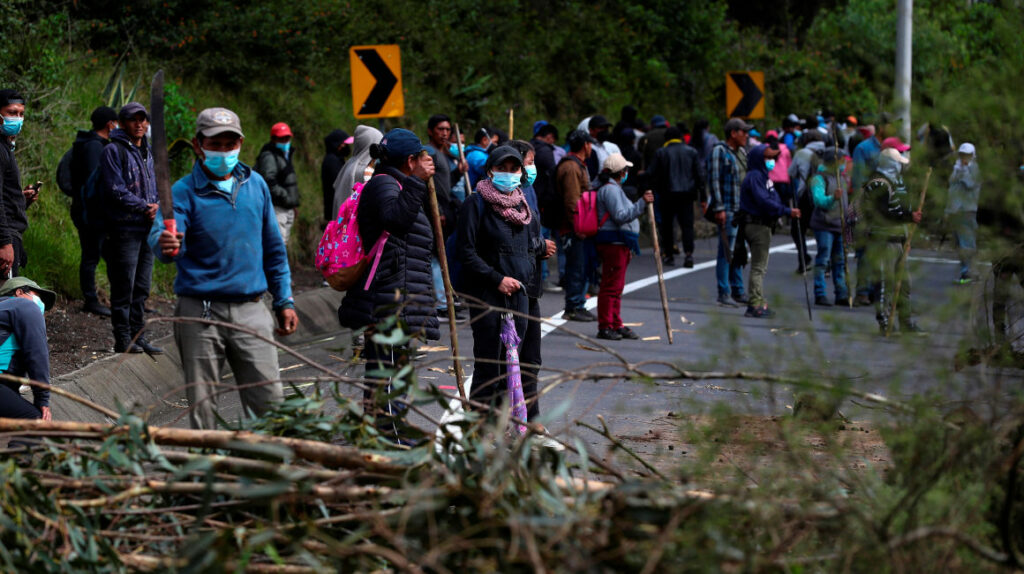Protesters have the right to choose the place for their protest, which must be peaceful. And the State has the duty to guarantee that free expression, even if it prevents the right to transit for the rest of the population, according to the agency.
There are several judgments of the Inter-American Court of Human Rights (IACHR) that support the right to protest in the region. And Ecuador is a signatory of the American Convention, which guarantees the right to assembly, to protest or to demonstrate.
According to the agency, these rights cover both private and public meetings, whether static or with displacement. However, they must be peaceful. And the State has “the obligation to facilitate and create conducive environments so that people can effectively enjoy their right to assembly.”
And the Inter-American System, through the Inter-American Court of Human Rights and the Inter-American Commission on Human Rights (IACHR), establishes guidelines to guarantee these rights of citizens.
Authorization is not required
The IACHR says that the exercise of the right to assembly through social protest should not be subject to an authorization by the authorities or to excessive requirements that make it difficult to carry out, since they are not compatible with the Inter-American System.
Protests are essential for democratic consolidation and, therefore, constitute as legitimate a use of public space as any other, says the Office of the Special Rapporteur for Freedom of Expression.
The conveners or protesters can choose the place
As a general rule, the right to demonstrate and protest includes the right to choose the time, place and way of doing it.
The authorities must facilitate the holding of meetings, social protests or public demonstrations, guaranteeing that they can be carried out, seen and heard by the target public in the space chosen by the conveners, so that the message that the organizers and participants wish to spread arrives.
On the counter demonstrations
Counter demonstrations cannot interfere with the exercise of the right of third parties to assemble. The State must not allow the right to carry out a counter demonstration to be extended to such an extent that it interferes with the right to demonstrate of other groups.
The right to protest vs. the right of free transit
Protests are essential for democratic consolidation and, therefore, constitute as legitimate a use of public space as any other, says the IACHR.
Thus, “they cannot be eliminated as a way to guarantee other more routine uses of these spaces, such as commercial activity or the movement of people and vehicles.”
The IACHR has highlighted that streets and squares are privileged places for public expression.
Therefore, the possibility of restricting the exercise of the rights of the protesters by the mere generation of annoyances or distortions to the rights of other people is not provided.
Violence must not suppress the right to protest
The Commission says that the violent actions of protesters or third parties, which put the life or physical integrity of people who participate or not in the protest at risk, obliges the State to take the actions provided to prevent and avoid these events, limiting the right to protest of the perpetrators of the acts of violence.
But when some individuals commit acts of violence in the context of a protest, they must be individualized, and the other protesters retain their right to peaceful assembly.
The criminalization of social protest is supported by the laws
With the context of the demonstrations called last week by the social sectors, the limit of the right to resistance or protest is under scrutiny. The government has made it clear that it will stop all those who close public roads, under the argument of freedom of movement for other citizens.
Social organizations are analyzing actions and could take back the streets and highways of the country after the holiday. They are based on the fact that the Political Charter also protects the right to resistance against actions or omissions of the public power.
But the Constitution itself in article 326 prohibits the paralysis of public services, including transportation and public transportation. And the Comprehensive Organic Penal Code (COIP) classifies it as a crime against public security with a custodial sentence of one to three years.
Therefore, the paralysis of public services and resisting “violently to the restoration” of the same are not the only legal weapons that the governments of the day use against the protesters.
On this occasion there are also detainees for alleged failure to comply with legitimate decisions of the competent authority and disturbance of public order. The first also represents a penalty of one to three years and the second of up to five to 10 days.
In previous governments, such as that of Lenín Moreno and Rafael Correa, citizens, activists, and social leaders were detained, investigated, and tried for alleged sabotage, terrorism, and rebellion.
It happened with the indigenous leaders, such as Leonidas Iza himself, who has been investigated until now for the October 2019 strike for alleged instigation of sabotage, rebellion, terrorism and kidnapping. It also happened with several political figures after the police revolt of September 30, 2010 and also in those that happened between June and August 2015.


Thanks for this interesting juxtaposition of the Ecuadorian Constitution and the IACHR.